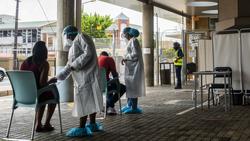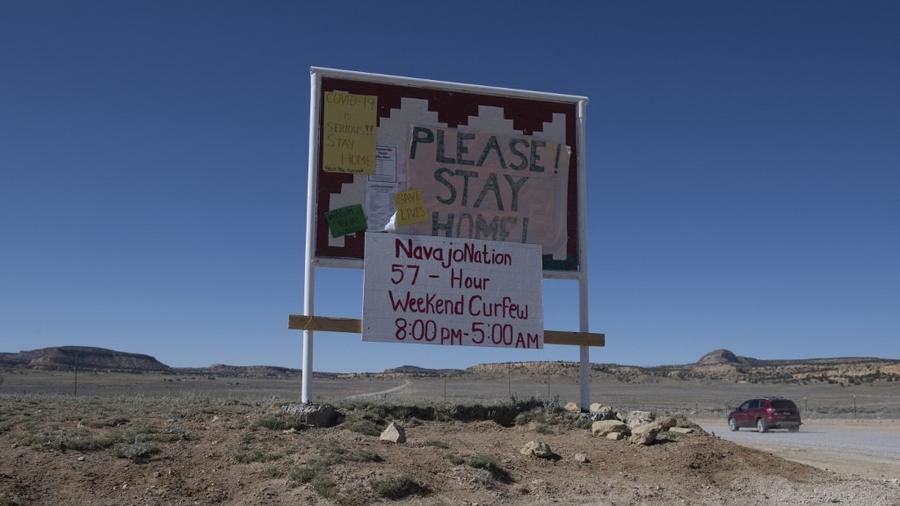 An illustration picture shows vials with Covid-19 Vaccine stickers attached and syringes with the logo of French-Austrian vaccine firm Valneva on Nov 17, 2020. (JUSTIN TALLIS / AFP)
An illustration picture shows vials with Covid-19 Vaccine stickers attached and syringes with the logo of French-Austrian vaccine firm Valneva on Nov 17, 2020. (JUSTIN TALLIS / AFP)
DAKAR / ADDIS ABABA / BRUSSELS - The European Commission said on Monday that no final decision had been made about the possible termination of a contract with Valneva to supply its COVID-19 vaccine to the European Union.
Valneva said earlier on Monday it had received a notice of intent from the Commission to terminate the contract. The statement triggered a sell-off of the company's shares, which lost one-fifth of their value in few hours.
EU Commission spokesman Stefan de Keersmaecker confirmed the EU executive had communicated to Valneva its intention to terminate the contract but said the final decision would only be made after consulting with Valneva on the matter
EU Commission spokesman Stefan de Keersmaecker confirmed the EU executive had communicated to Valneva its intention to terminate the contract but said the final decision would only be made after consulting with Valneva on the matter.
He told a regular news briefing that the notice had been sent after an agreement with EU governments, but said the notice was only the start of a process.
Valneva can now propose alternative solutions and only after that would the EU decide whether to terminate the contract, the spokesman said, adding that the EU "will consider any remedial solution the company may propose".
Under the deal, Valneva had agreed to supply up to 60 million doses of vaccine over two years.
 Health workers register residents at a COVID-19 testing station in the Richmond suburb of Johannesburg, South Africa, on Feb 10, 2021. (PHOTO / BLOOMBERG)
Health workers register residents at a COVID-19 testing station in the Richmond suburb of Johannesburg, South Africa, on Feb 10, 2021. (PHOTO / BLOOMBERG)
Africa
The disruptions caused by the COVID-19 pandemic pushed an estimated 55 million Africans into extreme poverty in 2020 and reversed more than two decades of poverty reduction in Africa, said a report by the United Nations Economic Commission for Africa.
The report with the theme "Fight against poverty and vulnerability in Africa during the COVID-19 pandemic", was issued by the ECA during the 54th session of the Conference of African Ministers of Finance, Planning and Economic Development that's being held from May 11 to 17 in Dakar, capital city of the West African country Senegal.
The report exposed the causes and consequences of the increase in poverty due to the COVID-19 pandemic, as well as other shocks such as the oil prices.
ALSO READ: WHO: Africa seeing uptick in COVID cases driven by S.Africa
Non-poor people whose level of consumption was at $1.90 to $2.09 a day (0-10 percent above the poverty line) fell into poverty because of the pandemic, since even a small amount of consumption volatility could push them below the poverty threshold, said the report.
It noted that poor people with few assets, limited access to credit, informal employment and low wages were particularly severely hit by containment measures introduced during the pandemic.
The report also warned that 15 African countries were also at risk of finding themselves "in a situation of over-indebtedness".
Meanwhile, the number of confirmed COVID-19 cases in Africa reached 11,555,033 as of Sunday evening, the Africa Centers for Disease Control and Prevention said.
The specialized healthcare agency of the African Union said the death toll across the continent stands at 252,637 and some 10,874,157 patients have recovered from the disease so far.
South Africa, Morocco, Tunisia and Libya are among the countries with the most cases on the continent, said the Africa CDC.
Portugal
Portugal started to offer a fourth dose of the COVID-19 vaccine to elderly people and nursing home residents, the country's Directorate-General of Health (DGS) said on Monday.
The second booster dose was initially scheduled to be administered only in early autumn of this year but was brought forward due to the increase in the number of new infections in Portugal.
According to the DGS, this week those over the age of 80 will be offered the shot at vaccination centers or health centers.
The DGS's Technical Commission for Vaccination Against COVID-19 (CTVC) has recommended this second booster dose to improve "the protection of the most vulnerable members of the population, given the current increase in the number of new cases."
The DGS estimates that around 750,000 people should be immunized over the next four months, including those who recover from COVID-19 during this period.
Subsequently, the second booster dose will be offered to children and young people aged between 12 and 15 and to those with immunocompromised conditions.
 A sign asking Navajo residents to stay safe and warning of a curfew near the Navajo Nation town of Casamero Lake in New Mexico on May 20, 2020. (MARK RALSTON / AFP)
A sign asking Navajo residents to stay safe and warning of a curfew near the Navajo Nation town of Casamero Lake in New Mexico on May 20, 2020. (MARK RALSTON / AFP)
United States
The daily curfew for residents on the Navajo Nation, which has the largest land area retained by a Native American tribe in the United States, was lifted on Aug 6 after it had been enforced for about 17 months, but the indoor mask mandate is still in effect despite policy changes in the states of Arizona, New Mexico and Utah.
In June of 2020, the Navajo Nation, with a population of 173,667 on the 2010 census, surpassed New York and New Jersey, both regarded as hot spots of the pandemic
In June of 2020, the Navajo Nation, with a population of 173,667 on the 2010 census, surpassed New York and New Jersey, both regarded as hot spots of the pandemic, with the highest per-capita coronavirus infection rate in the country, showing a clear sign of COVID-19's disproportionate impact on minority communities.
Besides Navajo Nation, almost all Native Americans' communities, from Choctaw Nation in Oklahoma to Pinoleville Pomo Nation in California, experienced at least two waves of death surges since the pandemic started.
So many communities of color, Native Americans had been devastated by the virus, but the data may not reflect the full extent of the toll COVID-19 has taken on them.
ALSO READ: Pfizer, EU push back COVID jab delivery to help booster drive
The communities of Native Americans always worry that their loss is not being fully recognized by a state data system that is misclassifying Native Americans as Latinx or multiracial, and that the deaths could lead to an irreplaceable cultural devastation.
"When people talk about minorities being affected, well, tribal people in this country are not in the minority. We're an endangered species," said Moke Simon, chair of both the Lake County Board of Supervisors and the Middletown Rancheria of Pomo Indians of California, a few weeks into the initial stay-at-home order.
"There's only two and a half million left of us," he said. "And it's very scary."
Shaydreanna Jackson, a Hualapai living with the Havasupai people near the Grand Canyon region, told local indianz.com that the pandemic is scary for her tribe as well.
"We're already small as it is, and we've had a lot of cases out there and it's taken quite a bit of our elders," Jackson said. The Hualapai Tribe, with a population of 1,621, had 206 positive cases overall last December, according to data from the tribe's COVID-19 tracker.


